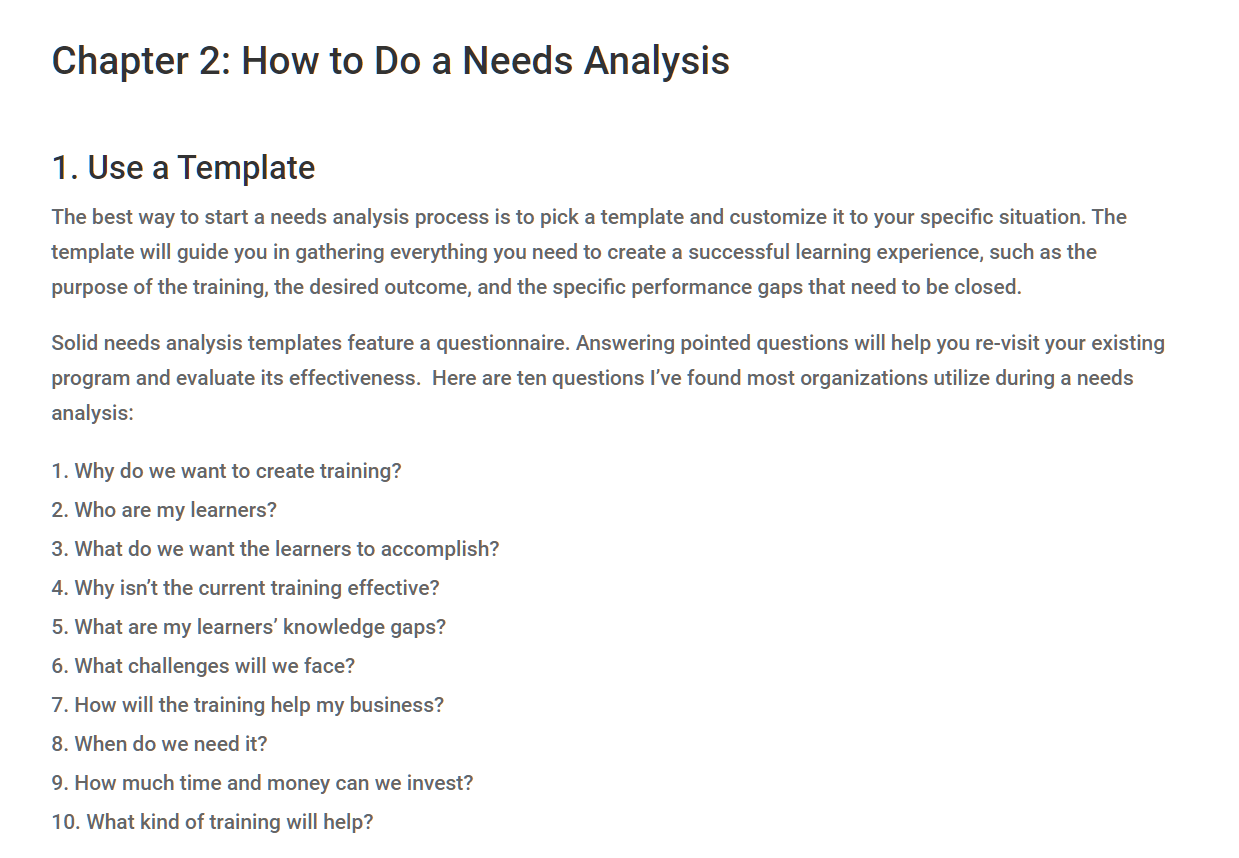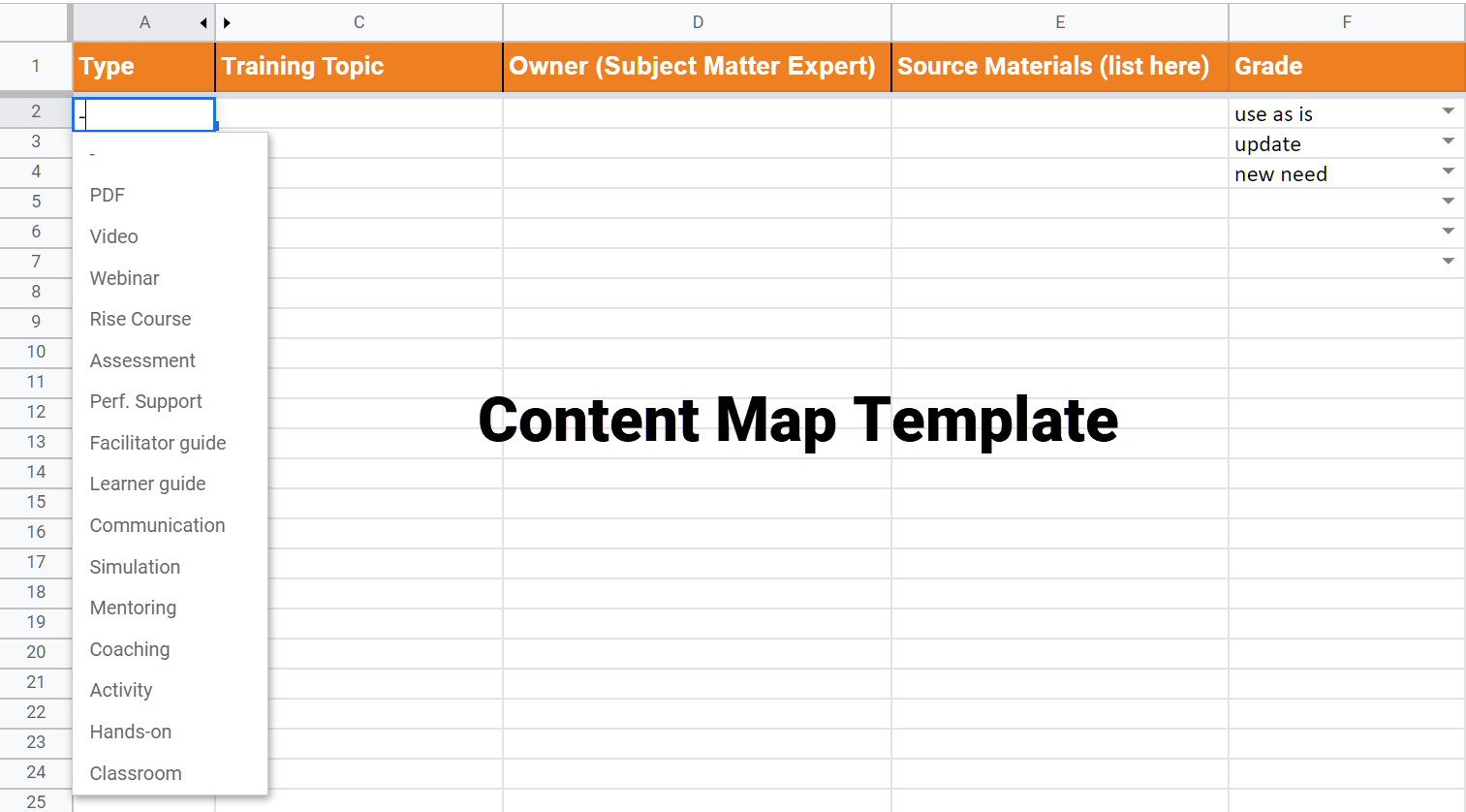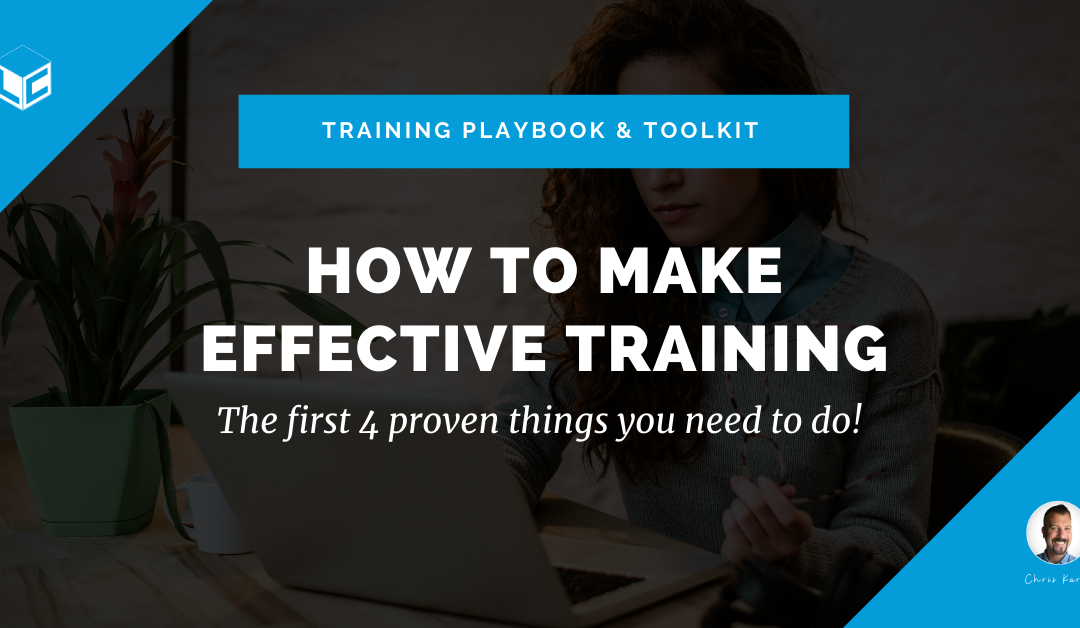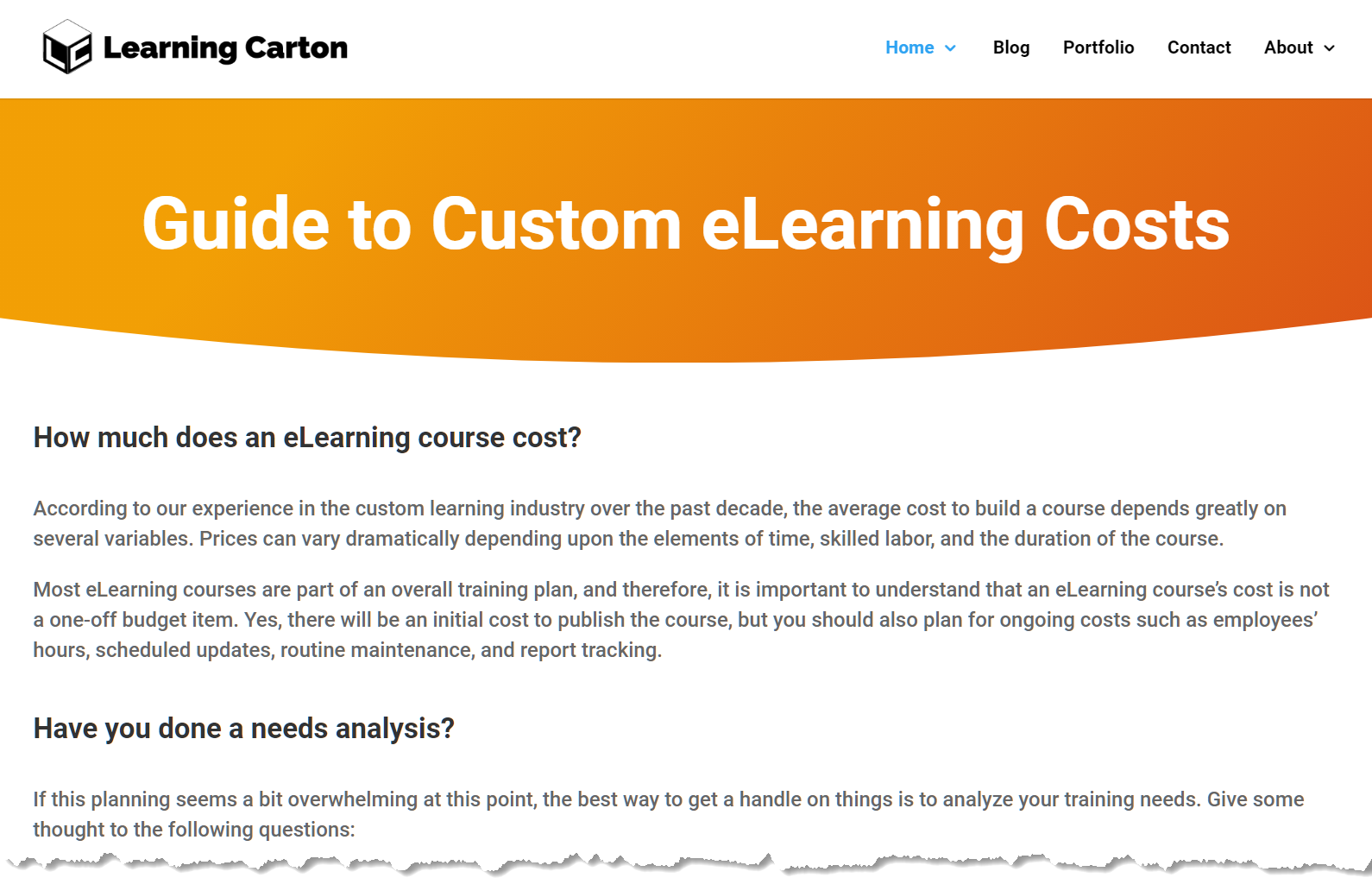4 Proven Things You Need To Make Effective Training
Do you have to teach people in your company or organization how to do something? This post will give you the first four things you need to do to make effective training. Perhaps, you have never created training and suddenly that’s your job. Well, this post will help you learn how to create quality learning experiences for your employees. Or maybe you are looking for a recipe to make a learning program because you want to be the best in class, an industry-leader, or even win some awards. This post will offer you the recipe – but you have to learn how to bake that training cake through practice.
There are no shortcuts to creating meaningful learning experiences. To make effective training, you need to follow an eight-phase process.
- Analyze the need
- Develop a learning strategy
- Scope the solution – budget
- Source and curate the content
- Create new content
- Distribute
- Evaluate performance
- Plan for obsolescence
Let’s dive into analyzing the need.
Analyze the Need
Before you start making any kind of training (video, webinar, elearning course, program), you should analyze the need for training. This starts by using a tool to gather data. A survey or a “Q & A” template will suffice as long as you answer all the W’s and the H’s.
To complete a needs assessment follow these steps:
- Use a template to gather data
- Gather the data
- Decide upon a delivery method – (online/in-person or blended)
- Take action on your findings
For more information on this phase, check out A Training Needs Analysis Guide.

Now it’s time to move into developing a learning strategy.
Develop a Learning Strategy
A learning strategy is a plan that consolidates your analyzed need into a roadmap to create a new training experience for your learning audience. The learning strategy may exist in your company or organization if you have an established learning and development or training department. If you don’t have an L & D or training department, then you can quickly develop your own strategy using a template.
A learning strategy should contain the following items:
- Overview
- Business need
- Performance objectives
- Learner personas
- Training recommendations
- Content outline
- Training time
- Development plan
- Learning objectives
- Integration
- Engagement
- Automation
- Assessment
- Implementation
Developing a learning strategy is a process in and of itself. I suggest using a template to make this happen if you’ve never created a training program before. If your company or organization has a learning plan in place, have it on hand as you move to scope the solution.

Scope the Solution
To determine the cost of executing your learning strategy you only have to identify three things:
- Team: internal employees and external vendor help
- Labor costs: yours, your team, and external vendor costs
- Asset costs: will you provide all of the visuals or purchase new ones (custom made or stock)?
To calculate the costs, list what you think it will take based on the time and talent needed to complete your project. Then, I suggest reaching out to your training department for guidance on budgeting. If they are overwhelmed, or they are no longer operating at normal capacity, contact a training consultant. I’m able to ballpark most projects in a 30-minute call. Once you know how much it will cost, and you have a budget to complete the project – you can start working on the content. The work begins at the source.
For more detailed information on scoping, check out this Guide to Custom eLearning Costs
Source and Curate the Content
To source your content you need to map it all out. In the online learning world, we call that “content mapping.” Content mapping is easy with a tool like the one pictured below.
The process is only five steps:
- List all of your topics in the program or course
- Identify the type of material (i.e. pdf, video, webinar, in-person training)
- Identify the subject matter expert (SME) for each topic
- Create links to the original source material
- Curate the content by noting “use as is,” update, or new need

Using a tool like the one pictured above will help to identify everything you have on the topic. Once you know where everything is, who the expert is on the topic, and what content is reusable, it’s time to create new content.
Conclusion
I hope this post showed you the first four things you need to do to make effective training. Now I want your input. Which of the four have you used before? Which one do you need or want to use now? Use these tools to make your training more effective.
Did you like what you read? Join my learning pals. Please subscribe to my newsletter to receive free learning resources delivered to your inbox every two weeks.
THE END



